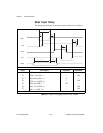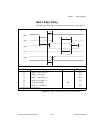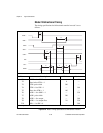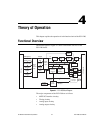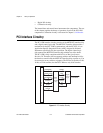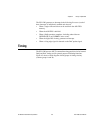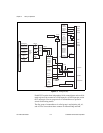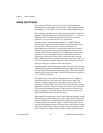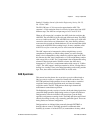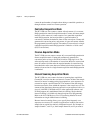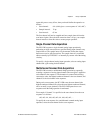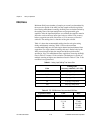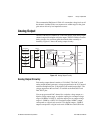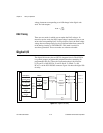Chapter 4 Theory of Operation
PCI-1200 User Manual 4-6 © National Instruments Corporation
Analog Input Circuitry
The analog input circuitry consists of two analog input multiplexers,
multiplexer (mux) counter/gain select circuitry, a software-programmable
gain amplifier, a 12-bit ADC, and a 16-bit sign-extended FIFO memory.
One of the input multiplexers has eight analog input channels (channels 0
through 7). The other multiplexer is connected to channels 1, 3, 5, and 7 for
differential mode. The input multiplexers provide input overvoltage
protection of ±35 V powered on and ±25 V powered off.
The mux counters control the input multiplexers. The PCI-1200 can
perform either single-channel data acquisition or multichannel scanned
data acquisition. These two modes are software selectable. For
single-channel data acquisition, you select the channel and gain before
initiating data acquisition. These gain and multiplexer settings remain
constant during the entire DAQ process. For multichannel scanned data
acquisition, you select the highest numbered channel and gain before
initiating data acquisition. Then the mux counter decrements from the
highest numbered channel to channel 0 and repeats the process. Thus, you
can scan any number of channels from two to eight. Notice that you use the
same gain setting for all channels in the scan sequence.
The programmable-gain amplifier applies gain to the input signal, allowing
an input analog signal to be amplified before being sampled and converted,
thus increasing measurement resolution and accuracy. The instrumentation
amplifier gain is software selectable. The PCI-1200 board provides gains of
1, 2, 5, 10, 20, 50, and 100.
The dither circuitry, when enabled, adds approximately 0.5 LSBrms of
white Gaussian noise to the signal to be converted to the ADC. This
addition is useful for applications involving averaging to increase the
resolution of the PCI-1200 to more than 12 bits, as in calibration. In such
applications, which are often lower frequency in nature, noise modulation
is decreased and differential linearity is improved by the addition of the
dither. For high-speed 12-bit applications not involving averaging, you
should disable dither because it only adds noise.
When taking DC measurements, such as when calibrating the board, enable
dither and average about 1,000 points to take a single reading. This process
removes the effects of 12-bit quantization and reduces measurement noise,
resulting in improved resolution. Dither, or additive white noise, has the
effect of forcing quantization noise to become a zero-mean random variable
rather than a deterministic function of input. For more information on the
effects of dither, see “Dither in Digital Audio” by John Vanderkooy and



